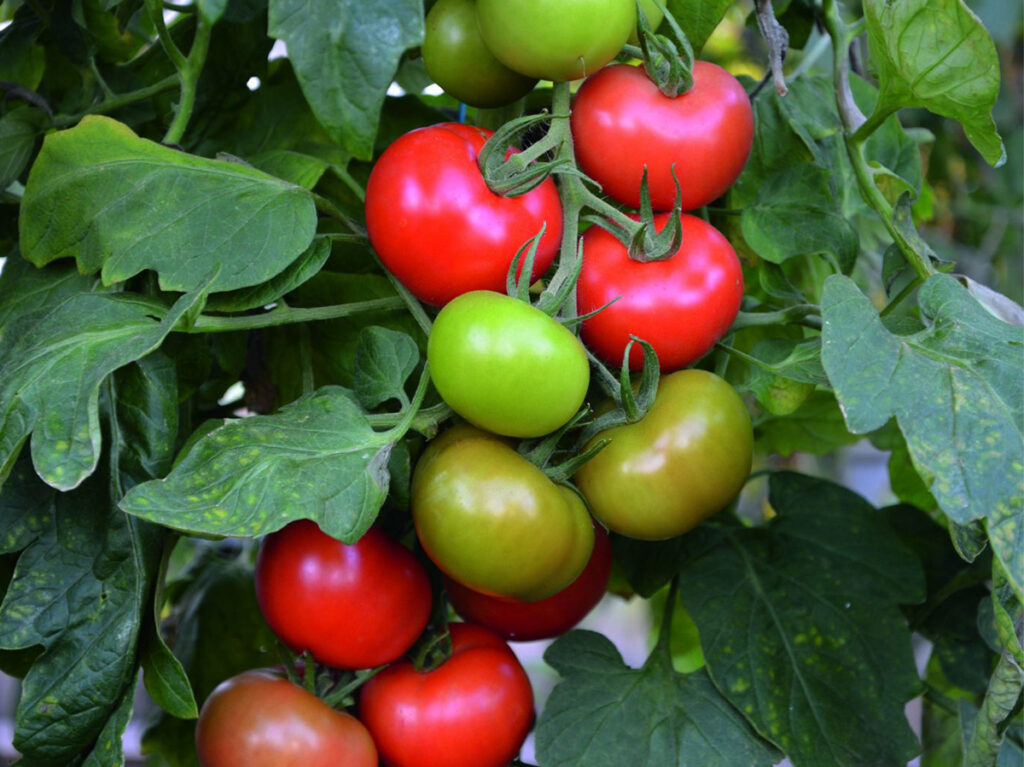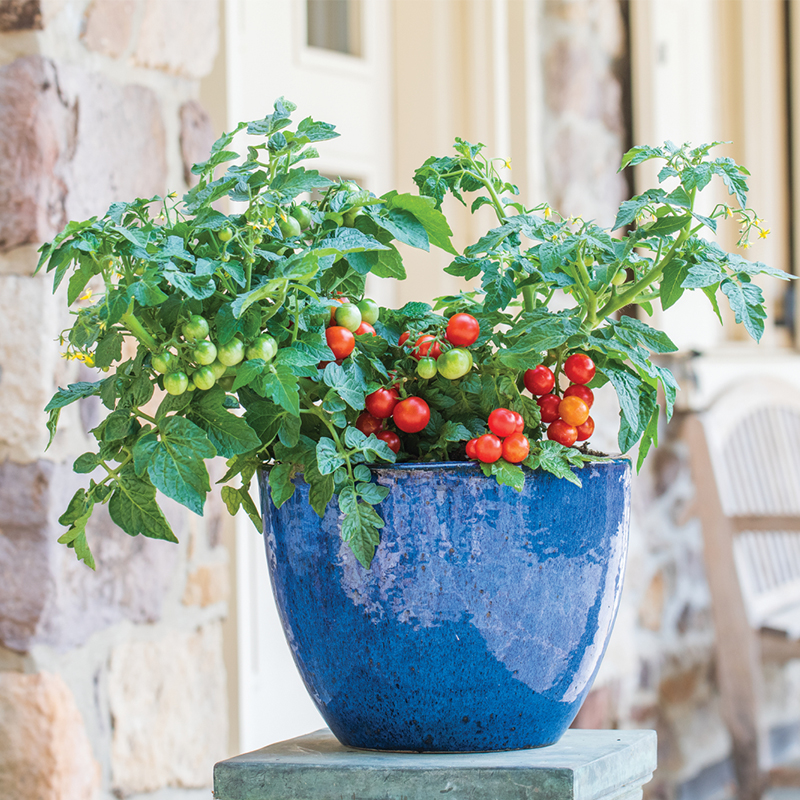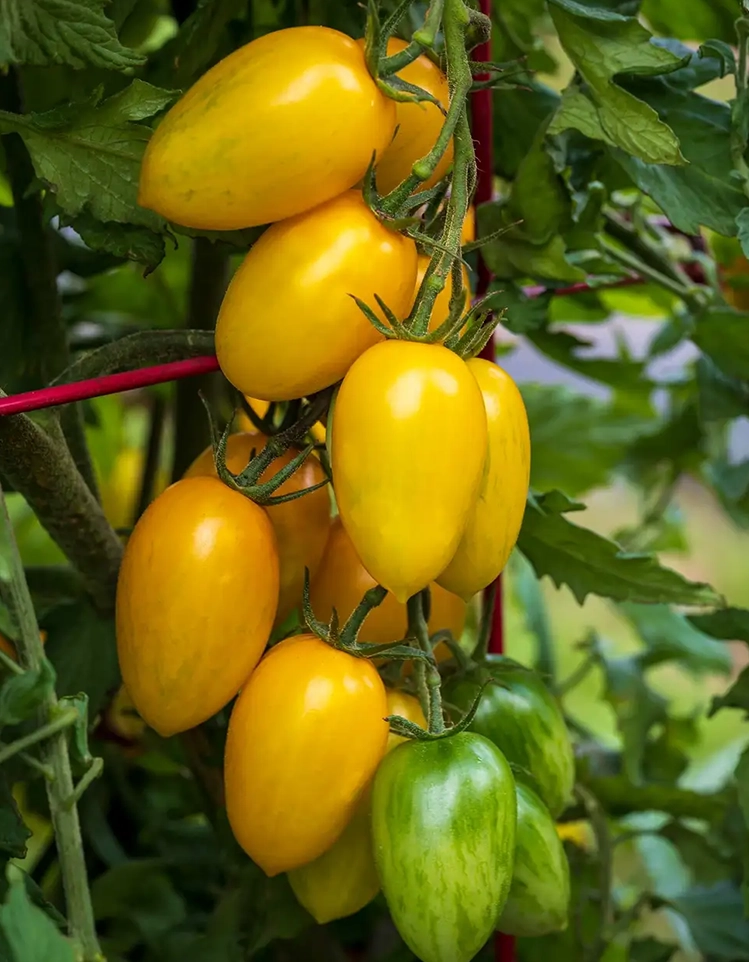The Story of the Humble Tomato
In the world of fruits and vegetables, the tomato stands proud and distinct. This vibrant fruit, often mistaken for a vegetable, boasts a rich history and significance in cuisines across the globe. Originally from South America, tomatoes journeyed to Europe and other parts of the world, becoming an indispensable ingredient in countless dishes. From the sun-kissed vineyards of Italy to the bustling markets of Mexico, the tomato found its home and respect in every kitchen it graced.
Its story is a testament to the adaptability of nature and the curiosity of humans. While in its early days, the tomato was viewed with suspicion (some even believed it was poisonous due to its bright colours!), it wasn’t long before its succulent flavours and versatility in cooking debunked any myths. Today, whether it’s in a tangy salsa, a creamy pasta sauce, or fresh off the vine with a sprinkle of salt, the tomato continues to enchant our palates.
Advantages of Growing Tomatoes from Seeds
Embarking on your tomato journey from seeds might seem daunting, but the advantages are numerous:
- Cost-Effectiveness: Seeds offer a budget-friendly entry into gardening.
- Varietal Diversity: Dive deep into a world beyond the typical beefsteak or cherry tomato.
- Local Adaptation: Seeds nurtured in native soil often result in stronger plants.
Choosing Your Tomato Seeds Type
Tomatoes come in two main growth patterns:
- Cordon (or indeterminate) tomatoes: Growing up to 1.8m (6ft) tall, these tomatoes thrive in greenhouses and sunny outdoor spots. They are perfect for places with limited horizontal space but require regular maintenance.
- Bush (or determinate) tomatoes: These are wider and shorter, ideal for pots, small gardens, or hanging baskets. They’re easier to manage and maintain.
We have a wide variety of tomato seeds available at Grown Local Popular choices such as Crimson Crush and Veranda Red are excellent choices for outdoor growing.


Sowing and Potting On
For the UK, sow tomato seeds indoors from late February to mid-March for greenhouse cultivation. If you’re growing them outdoors, wait until late March or early April.
When they start to sprout (usually in about two weeks), ensure they have plenty of light. As they continue to grow, it’s essential to move the seedlings to individual pots. Handle them with care, avoiding direct contact with their fragile stems.
We highly recommend using Garlands Super 7 Propagation Trays and Lids, they provide the optimal environment for germinating tomato seeds!
Transplanting: Setting Up for Success
Once the seedlings develop their second set of leaves, transplant them to small pots. As the tomato seedling grows, it will soon outgrow this small container.
When the tomato plant becomes too large for its pot, transfer it to a larger one. Choose a pot only a few inches wider than the root ball. This approach allows the roots to expand outward without overwhelming the plant. To optimize the growth of your tomato seedlings, repeat this transplantation process several times. Not only does this encourage robust root development, but alternating compost also provides consistent nutrition for your rapidly growing plant.
Planting
Young, well-rooted tomato plants grown from seed indoors should be ready to plant into their final position in early summer. Ensure there’s no looming frost threat. If you prefer not to start from scratch, you can also purchase vibrant young plants from garden centres and online suppliers in late spring and early summer.
Before introducing them to the great outdoors, these seedlings need a transition period. Placing them in a cold frame or shifting them between indoors and outdoors helps acclimatise them. Ideally, after a week or so of this transition, they’ll be ready for their permanent spot.
Tomatoes thrive in warm, sunny, and sheltered locations.
Modern Planting Techniques:
In our modern era, even gardening has been touched by technology and innovation. Recent advancements have brought forth efficient planting systems like Quadgrows and Autopots.
- Quadgrows: A blessing for those who seek bountiful yields with minimal fuss. This self-watering planter ensures plants get a steady supply of water from its reservoir. Especially for tomatoes, it means a consistent water supply, leading to healthier, more fruitful growth.
- Autopots: The epitome of gardening automation, Autopots provide water and nutrients from a reservoir to individual plants using the force of gravity. This ensures tomatoes get the right amount of water at all times, promoting consistent growth and potentially larger harvests.
Whether you’re using traditional methods or these modern systems, ensure your tomatoes have substantial sunlight. If opting for Quadgrows or Autopots, remember to regularly check on nutrient levels and the overall health of the plants. They’re an excellent choice for those who might not have time for daily watering but still want to reap a bountiful harvest.
Post-Planting Care
Once your tomato plants are settled in their new homes, be it in the ground, containers, or modern systems like Quadgrows and Autopots, their journey to providing delicious fruits has only just begun. Regular care, vigilance, and love are essential for a bountiful harvest.
Watering: Ensure your tomato plants are adequately watered but not over-watered. For those using Quadgrows and Autopots, ensure the reservoirs have enough water and that the system works seamlessly.
Feeding: Tomatoes are heavy feeders. Once the first fruits start to form, feed them every 10–14 days with a high potassium liquid fertiliser to ensure a hearty crop.
Pruning: Depending on the variety of tomato you’re growing – cordon or bush – your pruning methods will differ. Cordons are typically grown tall and require side shoots to be removed. Bush tomatoes are more compact and do not need their side-shoots removed.
Protection: Shield your plants from pests and diseases. Regularly inspect them and employ organic or chemical solutions as needed. The healthier the plant, the more bountiful and delicious the harvest!
Common Problems
While tomatoes are generally hardy, they can face some issues:
- Blossom End Rot: This is caused by calcium deficiency and irregular watering. To prevent it, ensure regular watering and maintain calcium levels in the soil.
- Tomato Blight: A disease causing brown patches on leaves and fruit.
- Tomato Leaf Mould: Affects plants in humid conditions.
… and a few others. For detailed solutions, refer to the RHS Website for more info.
Conclusion
Growing tomatoes is more than just gardening; it’s an experience. From sowing the seeds to the joy of harvesting, every step is a lesson in patience, care, and the wonders of nature. Whether you’re a seasoned gardener or just starting, may your tomato journey be as vibrant and enriching as the fruit itself!
Secret Tip!
Don’t compost your side-shoots, put them into a pot with some compost and within a few weeks it will have rooted and you will have a free extra tomato plant, don’t be disheartened if the cutting becomes droppy, as the Late Steve from GreensideUp would quote it will silk for a week!

